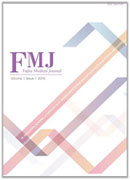4 巻, 4 号
選択された号の論文の5件中1~5を表示しています
- |<
- <
- 1
- >
- >|
Original Article
-
原稿種別: Original Article
2018 年 4 巻 4 号 p. 83-87
発行日: 2018年
公開日: 2018/11/05
PDF形式でダウンロード (648K) HTML形式で全画面表示 -
原稿種別: Original Article
2018 年 4 巻 4 号 p. 88-92
発行日: 2018年
公開日: 2018/11/05
PDF形式でダウンロード (304K) HTML形式で全画面表示 -
原稿種別: Original Article
2018 年 4 巻 4 号 p. 93-96
発行日: 2018年
公開日: 2018/11/05
PDF形式でダウンロード (152K) HTML形式で全画面表示 -
原稿種別: Original Article
2018 年 4 巻 4 号 p. 97-102
発行日: 2018年
公開日: 2018/11/05
PDF形式でダウンロード (431K) HTML形式で全画面表示
Case Report
-
原稿種別: Case Report
2018 年 4 巻 4 号 p. 103-107
発行日: 2018年
公開日: 2018/11/05
PDF形式でダウンロード (507K) HTML形式で全画面表示
- |<
- <
- 1
- >
- >|
